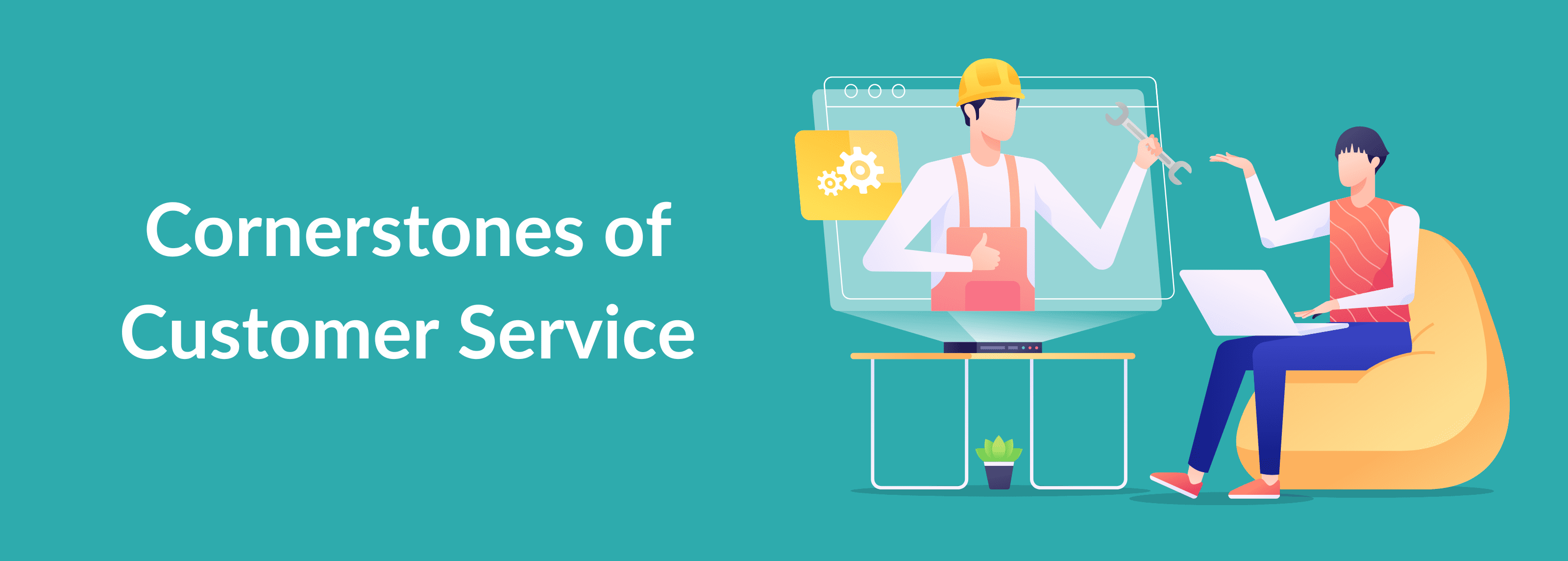The Cornerstones of Customer Service – How Do You Improve Them?
Forrester’s customer experience benchmark survey measures the factors that influence how customers perceive CX quality.
Among the 30 to 60 drivers of CX quality that they measure, three drivers related to customer service have shown to be highly influential on a customer’s perception of CX.
The three drivers are:
- The customer service rep (CSR) answers all my questions
- The company resolves my problems on the first contact
- CSRs have the authority to solve problems without a supervisor
How do you improve these drivers to have better business outcomes?
Let us delve into the improvement aspects of these drivers in the rest of this piece.
The CSR Answers All My Questions
How do you go about doing this? How do you enable your CSRs to answer all customer questions?
Following these strategies can maximize the chances of CSRs answering all customer questions.
Comprehensive Training
Ensure the reps are thoroughly trained on the product and service features and functionality. If you don’t know the intricacies of what you are selling, you’d be able to provide excellent customer service.
Provide them access to the knowledge base and FAQs that are searchable using tags.
Besides, train the reps on using technology tools, the company’s knowledge base, customer relationship management (CRM) system, chatbots, and any other relevant software.
Omnichannel Experience
Ensure that your customer service supports an omnichannel customer experience. As a rep, you will have access to every interaction the customer has had with you, irrespective of the channels they use, through a single interface.
You can access every customer interaction and the provided resolution with a single view of the customer.
This will ensure that you proactively address the queries without asking them to repeat themselves.
Real-Time Collaboration Tools
Provide access to instant messaging and chat platforms for the CSRs. This will allow them to seek assistance from subject matter experts or supervisors when they encounter something unfamiliar or challenging.
Implement Self-Service Capabilities
Self-service capabilities like chatbots and IVR can assist in gathering information from customers. The self-service channels can address most transactional queries, and the complex ones can be passed to the human reps.
The human reps will have access to all the information that the self-service channels gathered and can quickly get on to resolving the customer challenges.
Voice Analytics
Regularly monitoring voice and text scripts and analyzing them for keywords and phrases can throw up challenges related to compliance, misselling, and improper knowledge. These red flags would allow you to understand areas where reps are struggling to address customer challenges, and they can be taught to them.
This would act as input for customer service reps’ continuous learning and training programs.
The Company Resolves My Problems on the First Contact
First Contact Resolution (FCR) is a key metric for every customer service organization. Resolving customer queries during the first contact demonstrates efficiency and effectiveness, leading to customer satisfaction, loyalty, and higher lifetime value.
Everything we have written above regarding training, collaboration, analytics, self-service capabilities, and omnichannel contact center will help your CSRs resolve customer queries in the first contact. This will allow them to feel proud and boost employee morale and productivity.
You can track FCR continuously and understand trends or recurring issues that hinder FCR. You can use this information in the continuous learning and training programs.
CSRs Have the Authority to Solve Problems without a Supervisor
It all points to agent empowerment. It has a lot to do with the organization’s culture and customer-centricity.
Ask yourself these questions:
- Do I put customers ahead of everything else?
- Is customer focus a part of my organization’s DNA?
- Would I err in favor of the customers?
- Would I take a slight financial loss to ensure I have satisfied customers?
- Do I constantly measure NPS, CSAT, and customer effort scores and determine ways to improve?
- Does the organization seek input from the frontline customer service representatives on improving the service?
If your answer to these questions is Yes, you are in a customer-focused organization. Besides, you would most likely have empowered CSRs who would solve customer problems with autonomy and authority.
Take Ritz-Carlton as an example.
The hotel chain’s secret to success is to have empowered employees. Ritz employees are trained to go above and beyond for their guests.
Employees can make decisions that benefit guests without asking for permission.
Would you believe that Ritz allows employees $2000 of discretionary spending to take initiatives to solve customer problems?
Let me give you another example.
At Nordstrom, the employees are empowered to do everything to benefit the customers. Their training and development emphasize a lot on saying ‘Yes’ to customers.
Improving these drivers will have a clear impact on the perception of your customers about your service. Besides, it would allow you to grow your top-line, bottom-line, and profitability.
One thing is clear. This would mean happier customers who are satisfied, loyal and would likely become the ambassadors of what you offer.
